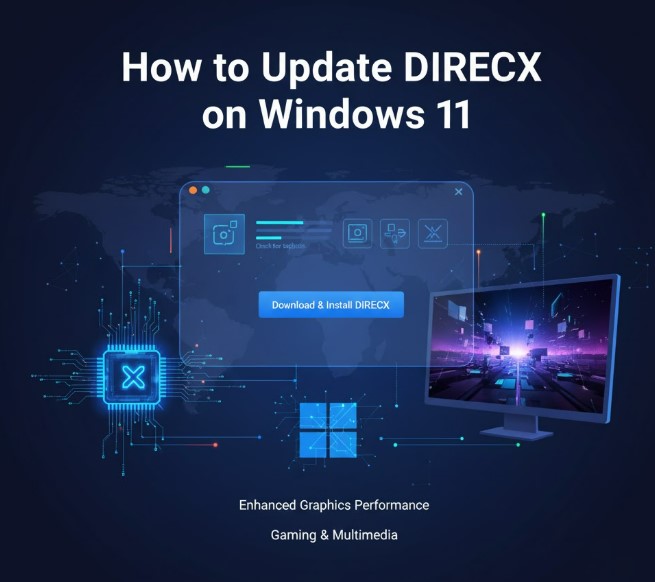Keeping DirectX updated is essential if you want the best gaming, graphics, and multimedia performance on Windows 11. While Microsoft delivers most DirectX updates automatically, many users still wonder whether they can manually upgrade to the latest version—especially with new games demanding improved rendering features every year. Here’s a clear, practical guide to help you check, update, and troubleshoot DirectX on your Windows 11 PC.

DirectX on Windows 11 Usually Updates Automatically
On Windows 11, DirectX updates are handled entirely by Windows Update, which means most users are already running the latest version without realizing it. As long as your system is connected to the internet and automatic updates haven’t been paused, the newest DirectX files arrive silently in the background.
As of November 2025, the latest version available on Windows 11 is DirectX 12. Earlier editions—DirectX 11, 10, 9, and 8—are still supported for compatibility, but Windows 11 ships with DirectX 12 preinstalled.
A Quick Warning About DirectX 13
There are no official releases of DirectX 13 yet. Any website offering a “DirectX 13 download” is fake and potentially dangerous. Microsoft does not provide a standalone installer for DirectX 12 or upcoming versions.
How to Check Your DirectX Version on Windows 11
If you’re curious about the version currently installed on your system, Windows offers a built-in diagnostic tool.
- Press Windows + R to open the Run dialog.
- Type dxdiag and hit Enter.
- The DirectX Diagnostic Tool will open.
- Select the System tab.
- Look for DirectX Version under the System Information section.
This quick method gives you an accurate view of the DirectX version your PC is running.
How to Force a DirectX Update on Windows 11
Since modern DirectX updates are distributed exclusively through Windows Update, this is the only reliable method to install the latest version.
Step-by-Step:
- Press Windows + I to open Settings.
- Select Windows Update from the left menu.
- Click Check for Updates.
- Install any available updates.
If Microsoft has released a newer DirectX component, it will be included as part of these system updates—there is no separate DirectX installer.
After updating, restart your PC to ensure the new components load correctly.
No Standalone DirectX Installer—Here’s Why
In the past, users could manually download DirectX 9 or DirectX 11 packages from Microsoft’s site. However, these have been discontinued. Microsoft now integrates DirectX updates directly into the Windows Update pipeline to keep the system stable and secure.
This approach also reduces compatibility issues by ensuring all users run the same core DirectX components.
What If You Don’t See Any DirectX Updates?
If Windows Update doesn’t offer any DirectX-related downloads, it simply means the latest version is already installed.
But if you’re experiencing video glitches, artifacting, stuttering, or game crashes, here are additional steps you can take:
✔ Update Graphics Drivers
This resolves most visual or performance problems.
Visit your GPU manufacturer’s website:
- NVIDIA
- AMD
- Intel
Install the latest driver package for your model.
✔ Switch to Vulkan (If Your Game Supports It)
Some titles allow you to switch between DirectX, Vulkan, or OpenGL.
Choosing Vulkan may deliver better performance or smoother rendering on certain systems.
✔ Check for Windows Optional Updates
Some driver-related updates appear under Advanced Options → Optional Updates.
Should You Worry About Missing DirectX Updates?
In most cases, no. DirectX 12 is already mature and powerful enough to support recent AAA games and advanced multimedia workloads. Microsoft continues improving it through cumulative updates rather than major standalone releases.
As long as your Windows 11 system is updated regularly, you’re good to go.
